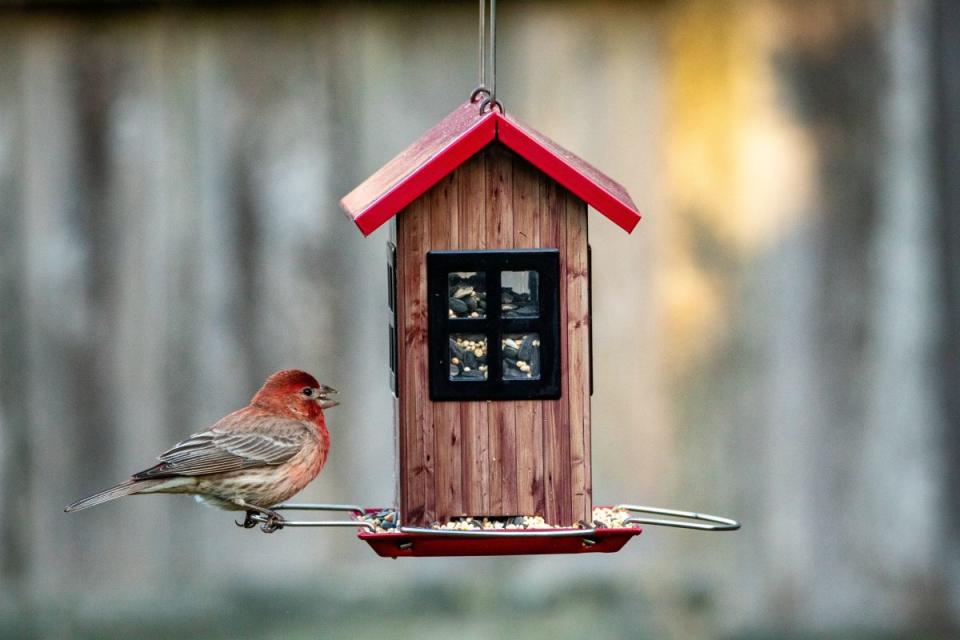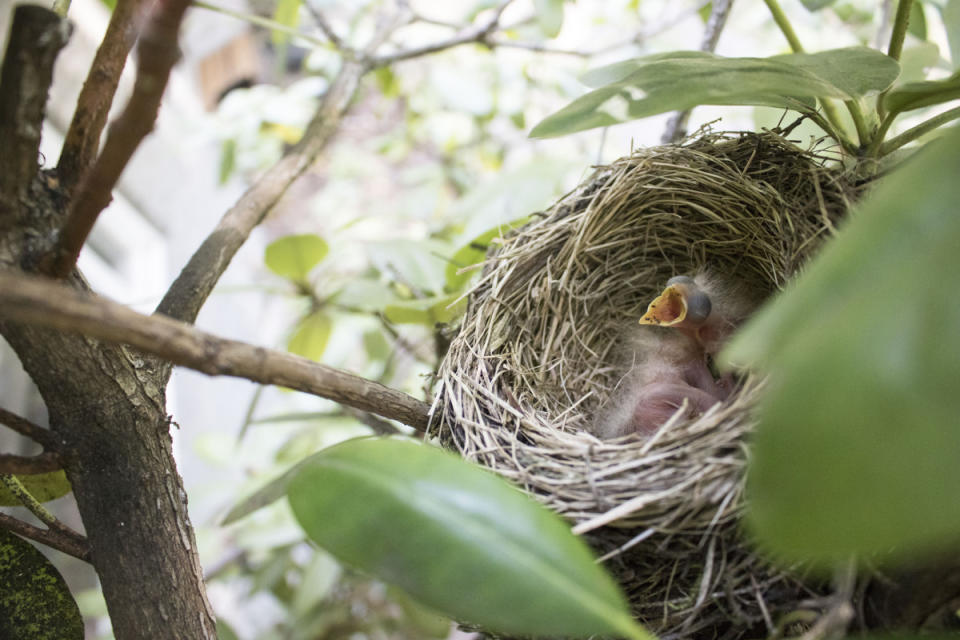How to Keep Birds Off Your Porch
While these feathered visitors bring nature's charm, they can also cause damage, leave behind bird droppings, and just be general pests. If you're looking for ways to reclaim your outdoor space, we'll explore effective and humane strategies to keep birds off your porch.
Remove Food Sources
Removing temptation may be enough. Keep your porch area clean of food sources, crumbs, and standing water that may attract birds. If you like to hang bird feeders, keep them placed away from the porch, and promptly clean up spilled birdseed or pet food.
Install Decoy Predators
Place decoy predators like owls or hawks on your porch. Birds are often deterred by the presence of these fake predators. These decoys can fool smaller birds into thinking there's a threat, prompting them to find a safer spot.
Add Reflective Objects
Birds are wary of reflective surfaces and moving objects. Hang old CDs/DVDs, reflective tape, or strips of aluminum foil around your porch to create a visual deterrent. The play of light and reflections on these shiny objects can startle them and discourage them from landing.

Photo by Joshua J. Cotten on Unsplash
Wind Chimes
Install metal wind chimes or other noise-making devices. The constant sound and movement can create an environment birds find less appealing.
Add Bird Netting
Use bird netting to create a physical barrier on nearby bushes. This prevents birds from landing around the area. Netting must be checked frequently because birds can get caught or injured in sagging or damaged nets.
Install Bird Spikes
Install bird spikes on ledges and surfaces where birds frequently perch. Though harmless, these spikes discourage roosting, which can solve a lot of your problems.
Use Ultrasonic Devices
Use ultrasonic devices that emit sounds annoying to birds but are typically inaudible to humans. Dogs on the other hand, can hear them, so be aware that it might be disturbing or irritating to your dogs or those in neighboring yards.
Related: A Healthy Lawn Starts With These Springtime Landscaping Tips
Create an Aromatic Barrier
Birds are often deterred by the smell of citrus. Placing orange or grapefruit peels or using citrus-scented sprays can help keep them away. Some birds also dislike the eucalyptus, peppermint, and cinnamon so using these as patio decor may discourage avian visitors.
Bird-Proof the Structure
Disrupting bird nests early can send birds off to find a more tranquil space. Check gutters, chimneys, nooks and crannies and remove nesting material (i.e. twigs, moss, leaves, feathers, and hair/fur) before their construction gets too far along.
Be mindful of local protections against some birds. Harming the birds, their nests, or their eggs can have legal implications.
Use Repellent
Apply non-toxic bird-repellent gels or liquids on roofs, ledges, porch railings, and statues where birds land. These substances create a sticky or shiny surface that birds dislike.
*Always consider the welfare of the birds, other animals, and the environment when implementing deterrent methods, and opt for humane solutions whenever possible. Combining different strategies increases effectiveness, but most importantly, be consistent in your efforts so that birds are encouraged to hang out elsewhere.

E. Fazio
Are some species of birds more damaging/more persistent?
Yes, bird behavior and capabilities for damage vary from species to species. The extent of the damage caused by birds often depends on their population density, seasonal behaviors, and the availability of food and nesting sites. Here are factors to consider:
Species Behavior
Pigeons and Starlings: Pigeons and starlings are known to be persistent and adaptable. They can quickly become accustomed to human environments, causing damage to structures and creating messes.
Woodpeckers: Woodpeckers can be damaging to wooden structures as they peck for insects or drum to establish territory.
Seagulls: In coastal areas, seagulls can be persistent and even aggressive as they implement their natural scavenging behavior.
Nesting Habits
Birds that nest on or around structures may cause more damage, especially during breeding seasons. Nesting materials and droppings can accumulate, leading to cleanliness issues and potential damage. Using reflective light and metal spikes are popular methods for deterrence.
Related: How to Get Rid of Gnats in Your Plants
Feeding Habits
Birds can quickly learn to be persistent if they find a reliable food supply on or near your porch. If you’ve ever tried to picnic on a beach with gulls, you know that birds can grow bold in pursuit of a snack.
Migratory Patterns
Bird activity may increase during mating season or as they pass through on their migration. Take your feeders and bird baths away if you don’t want to be a stopover spot.
Environmental Factors
Urban areas attract pigeons because they have adapted to human presence.
Robins love your spring garden for the worms.
Bird baths, water features, and an abundance of food are inviting to all birds.
Social Structure
Birds with strong social structures, like pigeons, may attract larger flocks, leading to more persistent and widespread issues if they declare yours to be their favorite spot.
Legal Protections
Note that some bird species are protected under the Migratory Bird Treaty Act. That includes some of the most pesky birds including pigeons, sparrows, and gulls. Harming the birds, their nests, or their eggs can have legal implications. Seek out local bird control authority to learn more in your area.

